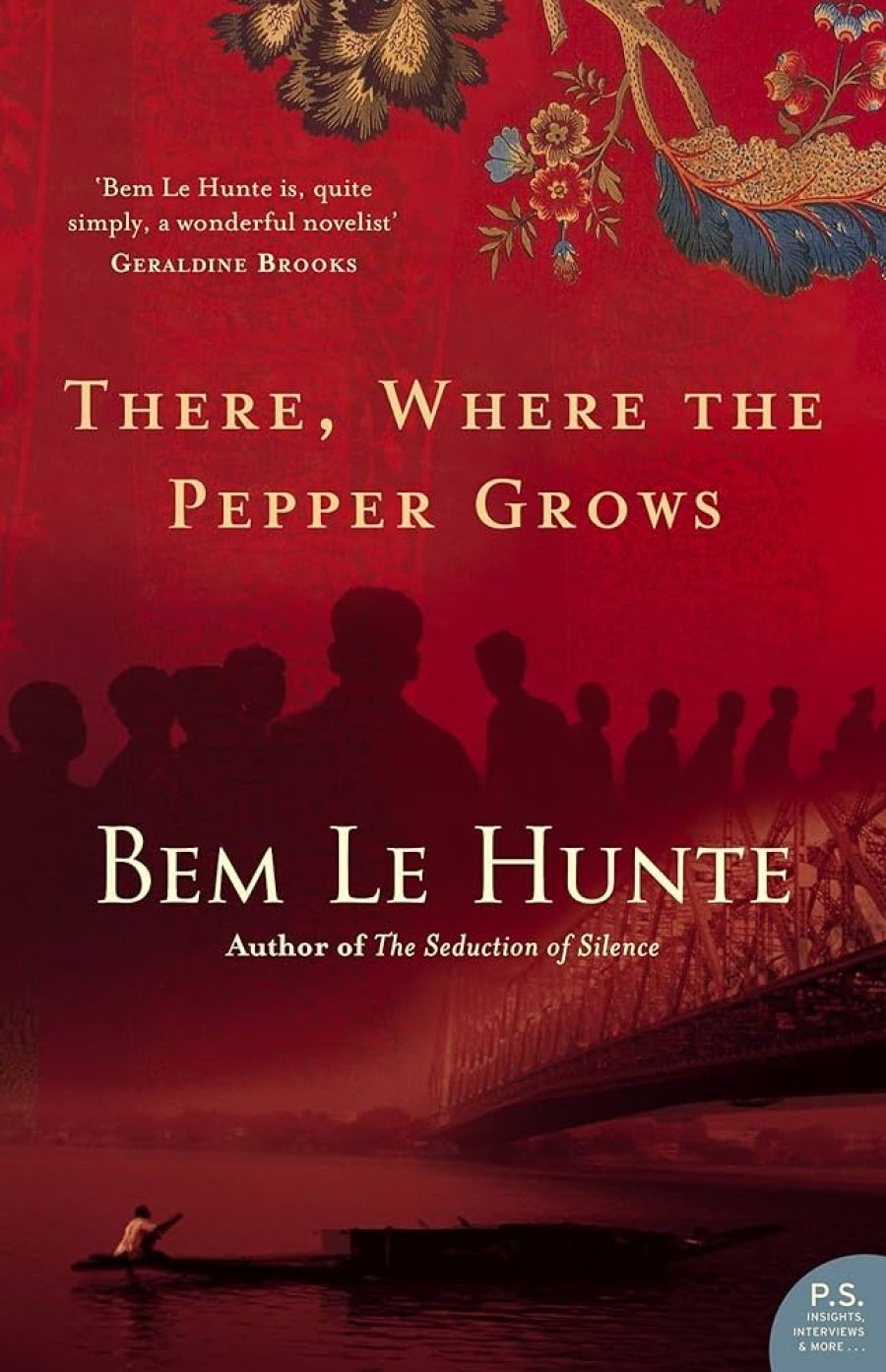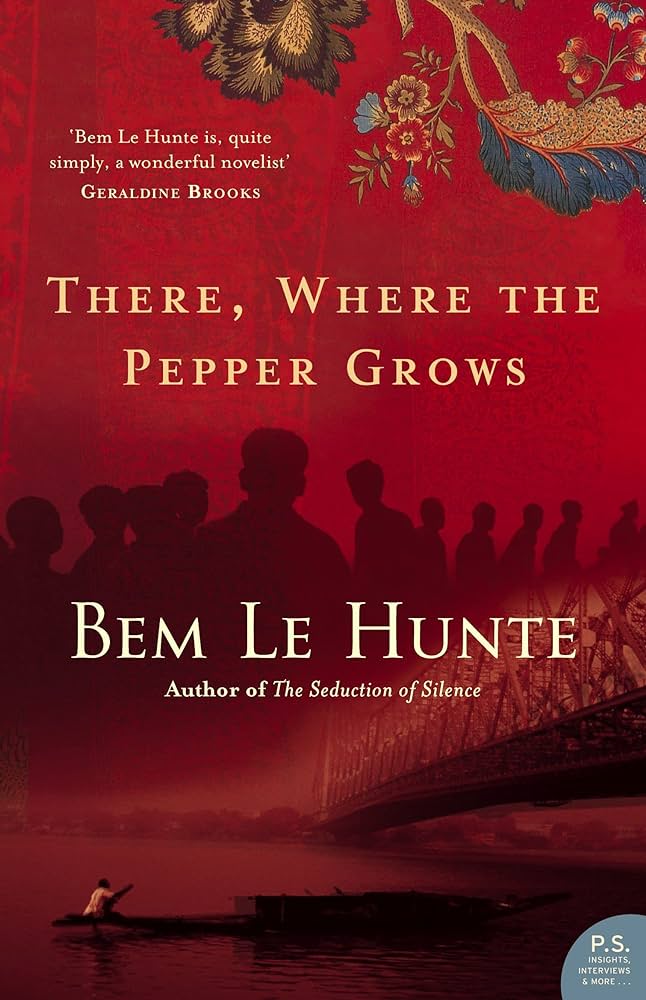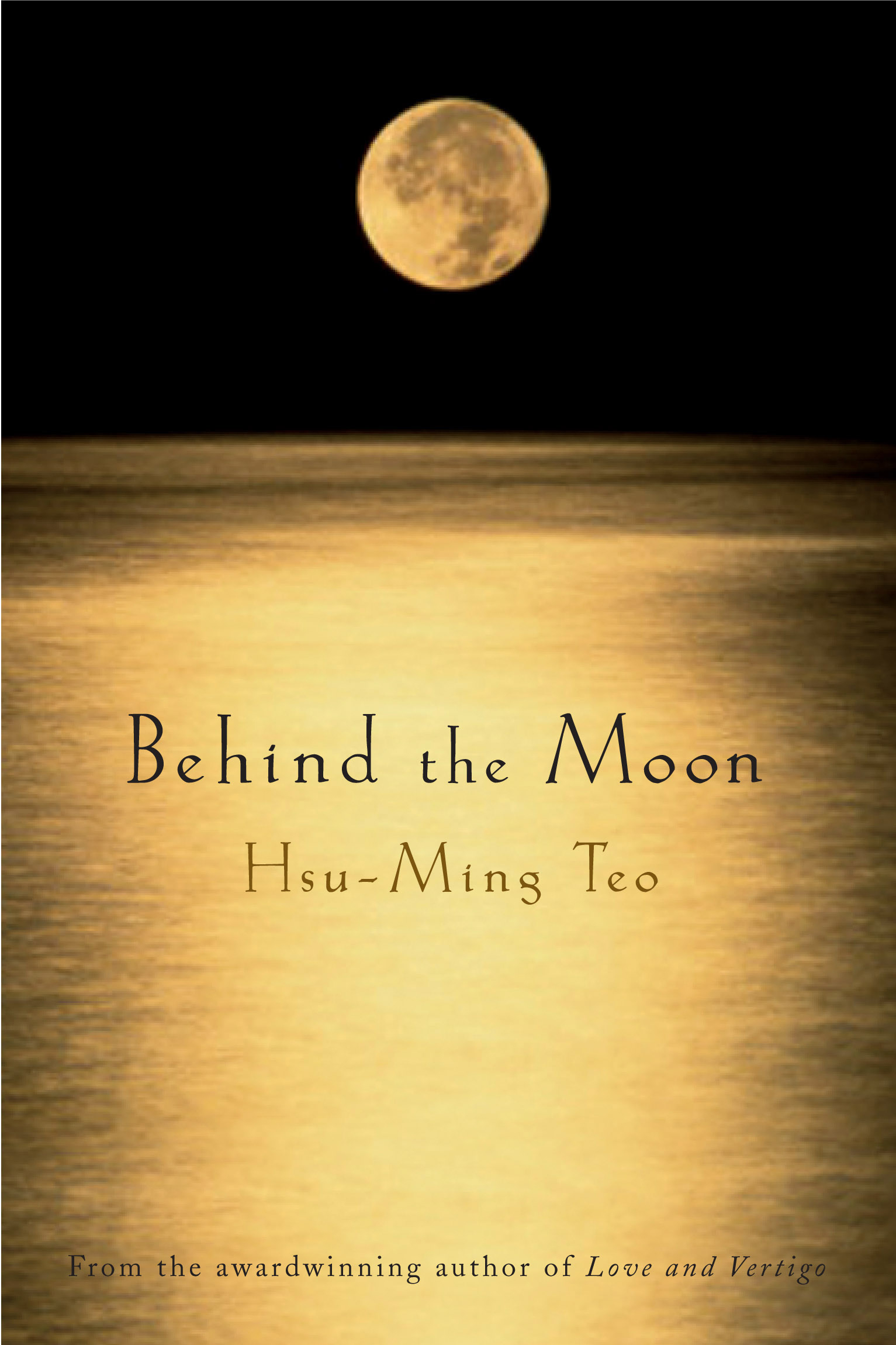
- Free Article: No
- Contents Category: Fiction
- Review Article: Yes
- Article Title: The necessary trap
- Online Only: No
- Custom Highlight Text:
There’s a joke that comes up in westerns about the book that saves: a thick volume in the chest pocket that takes a bullet. Bem Le Hunte introduces her second novel about a small band of World War II refugees: ‘This book was written as a prayer for those people who could not live to tell their tales. It was written, too, as a prayer for the future of our world, in the hope that stories like this have the power to save us.’ Certainly, this is a book that teaches hope against the odds, but when you consider how human cruelty has survived even the greatest stories, Le Hunte’s prayer sounds forlorn – unless she was thinking of saving us from boredom, in which case both There, Where the Pepper Grows and Hsu-Ming Teo’s Behind the Moon work most effectively.
- Book 1 Title: There, Where the Pepper Grows
- Book 1 Biblio: HarperCollins, $29.95 pb, 400 pp, 0732279917
- Book 1 Cover Small (400 x 600):

- Book 1 Cover (800 x 1200):

- Book 2 Title: Behind the Moon
- Book 2 Biblio: Allen & Unwin, $22.95 pb, 384 pp, 1741142431
- Book 2 Cover Small (400 x 600):

- Book 2 Cover (800 x 1200):

Teo sets Behind the Moon in Sydney, in the 1980s and 1990s. She tells the story of three outsiders who band together at school and share the intimate humiliations of loneliness. In There, Where the Pepper Grows, on the other hand, Le Hunte tells the story of some Jewish refugees who flee the Nazi occupation of Poland and make their way to a new life in Calcutta, where they live through riots and the British withdrawal from India. Le Hunte’s novel has a dramatic historical background, therefore, whereas in Teo’s novel the drama mostly lies in the foreground, as she traces the conflicts and affinities that connect families and friends. Nevertheless, these different works both explore how survivors need each other and, at the same time, need to escape each other; how they are caught in the necessary trap of their own true past.
In Behind the Moon, Teo shares the narrative between three characters: Justin Cheong, Tien Ho and Nigel ‘Gibbo’ Gibson; children at odds with their families and out of place at school. These three are always watching and hiding from each other, so their stories intertwine and knot together. It is a structure that reveals how they are always just missing one another; and it casts the reader into that defining adolescent experience of feeling forever to one side of the story, the imagined main event.
Le Hunte’s characters, on the other hand, find themselves in a story so large it makes fiction itself, in this novel, seem to one side of the main event. Hannah Arendt’s controversial and influential essay on The Concentration Camps (1948) marks out the difficulty of writing about the Holocaust. She cites Isaac Rosenfeld: ‘There is no response great enough to equal the facts that provoked it. There is nothing but numbness.’ Yet in There, Where the Pepper Grows, Le Hunte deals confidently with this difficulty. For a start, her narrator, Benjamin, has a notably efficient imagination, lending the novel the pace of an action adventure. For instance, after the war, Benjamin reads a letter that indicates the scale of the Holocaust. His response:
I feel like tearing up the letter, not just because I don’t know Honig, but because I feel so outraged that only one Jew from Piaski still lives in the area where once lived thousands. How did they do it? How did they actually, physically, mentally, manage to kill so many people?
This one letter finally closes the chapter for me on Poland. We can never go back there, ever.
But how can we go anywhere else, at this stage of our lives, with everybody so settled? Letters also arrive from Aaron, Farha and family who keep inviting us to go and live with them in Australia.
In such ways, the narrative typically turns back to family concerns, holding the tragedy in the scope of one family, one band of survivors. For the rest, the horror of war pushes Benjamin – and the novel – to moral declarations:
If we are to make this journey together, I believe, all hatred should be brought to light as soon as it arises, for we cannot allow it to fester. No nation should feel that it is the owner of moral purity, for none of us knows the whole Truth … In the name of the One God, the time has come to live and let live.
It would be hard to dispute such assertions, though Arendt might argue that such moralising constitutes a way of turning away from the unredeemable fact of suffering that happens for no reason and to no purpose.
If such moral declarations seem a tad abstract, Le Hunte sets up a domestic situation that serves as an example of surviving a difficult journey together. They are a complicated band: Benjamin, his wife Rivka, his stepson and Ewa, his beloved childhood sweetheart. It is war that separates Benjamin and Ewa; he leaves occupied Warsaw to work in the country. It is war that brings Benjamin and Rivka together; he marries her because she and her son need protection. Le Hunte uses this set-up to compare compassion with impassioned love, and impassioned love with the history that holds these survivors together.
The difficulty that these survivors face – the difficulty of starting life again – also poses its problems for the structure of the novel. There, Where the Pepper Grows has a beginning in the middle and another beginning at the end. In her Notes on Form in Art (1868), George Eliot advises: ‘We find what destiny pleases; we make what pleases us – or what we think will please others.’ Le Hunte explains in her acknowledgments, ‘This is a novel based on real events’; and in There, Where the Pepper Grows it sometimes seems as if Le Hunte finds what destiny pleases, making the plot defer to the facts of history.
It is a mark of her energy as a writer that she just about carries this off. The survivors’ lucky escape justifies an emotional and exuberant sense of life, and Benjamin tells their story in a loose, lively, conversational style: ‘I am thinking … Believe me … Believe it or not … Who would have thought …’ So, although There, Where the Pepper Grows depends on a reader’s faith in the moral value of stories, it retains the reader’s interest with its direct narrative style.
In Behind the Moon, Teo’s prose is altogether more exact and more exacting, with many small delights: ‘a ragged cough’, ‘a small nudge of shame’. It’s a style that allows for precise delineation of character and the complexities of emotion. Teo’s first novel, Love and Vertigo (2000), won the Australian/Vogel Literary Award. Against all the laws of second novels, Behind the Moon is better yet.


Comments powered by CComment